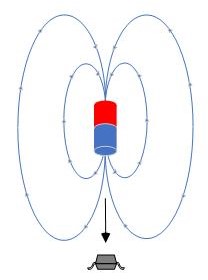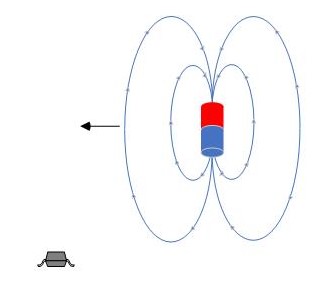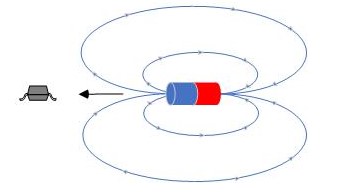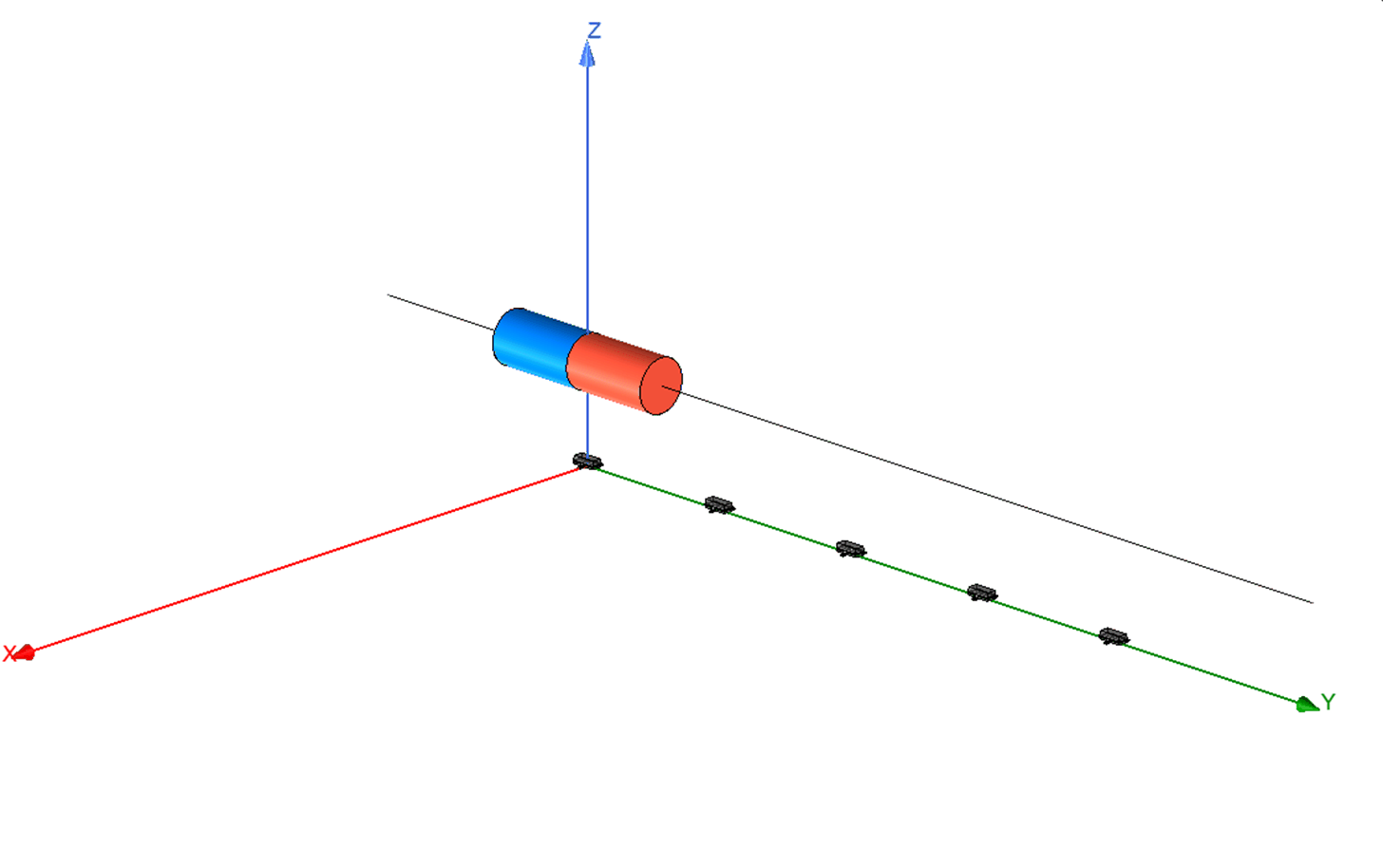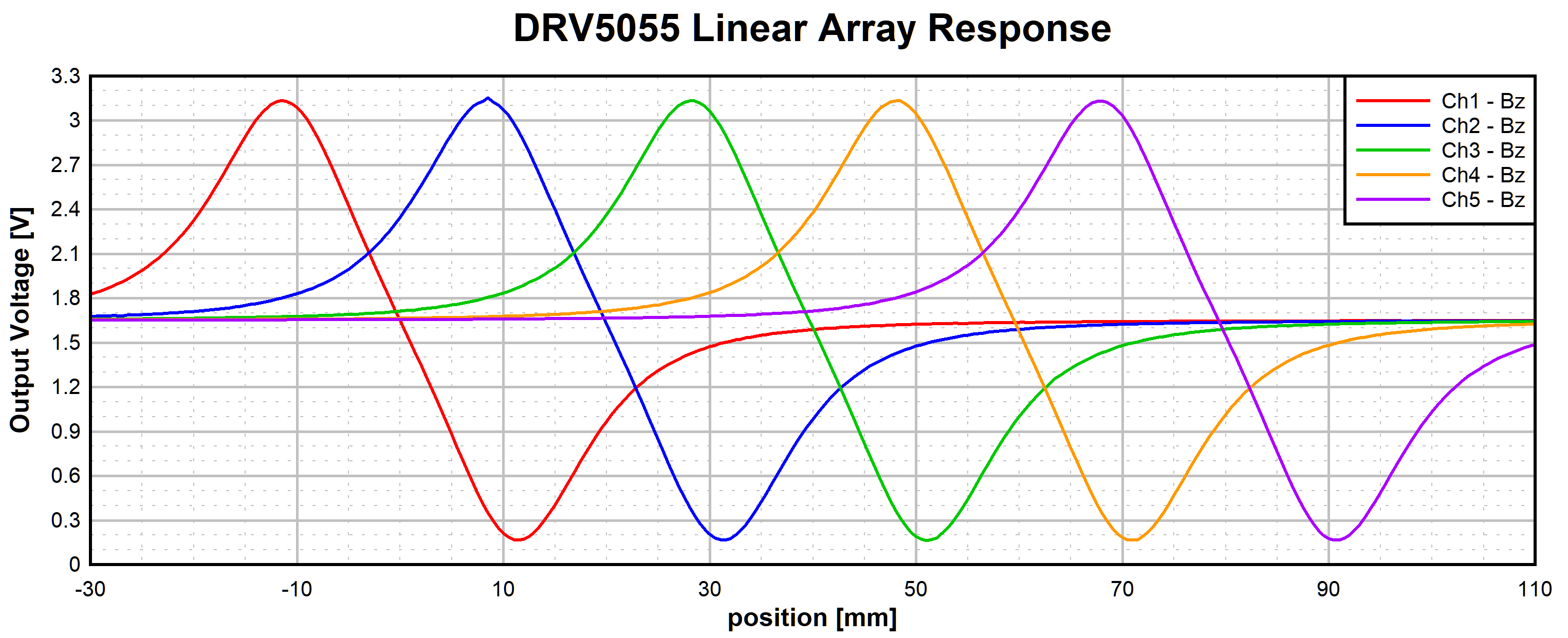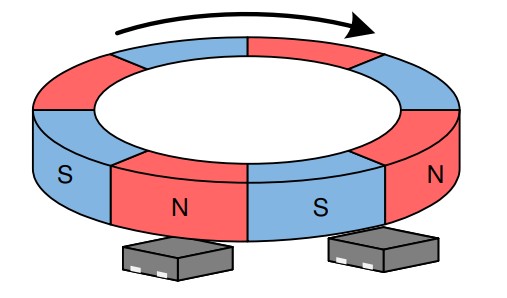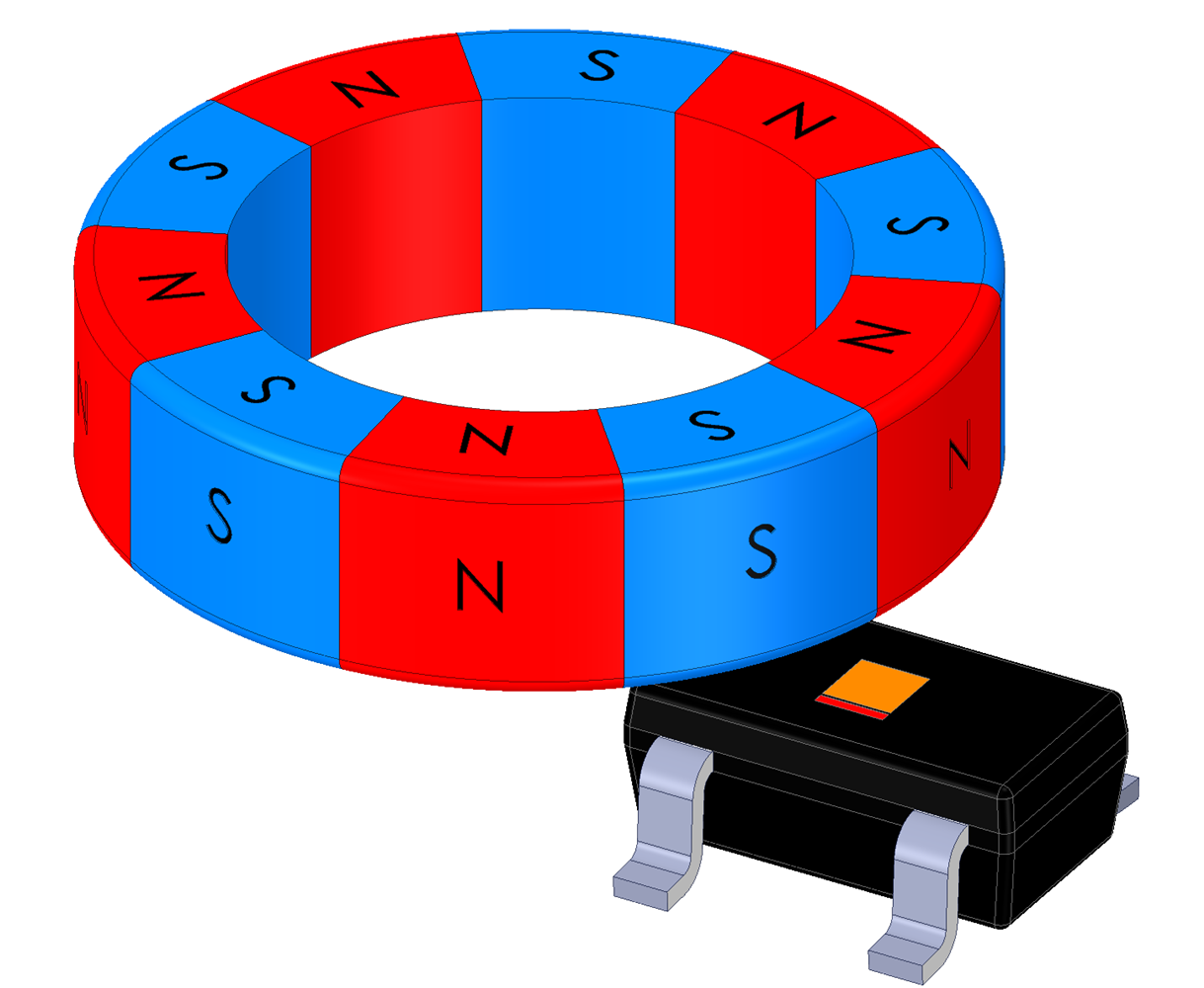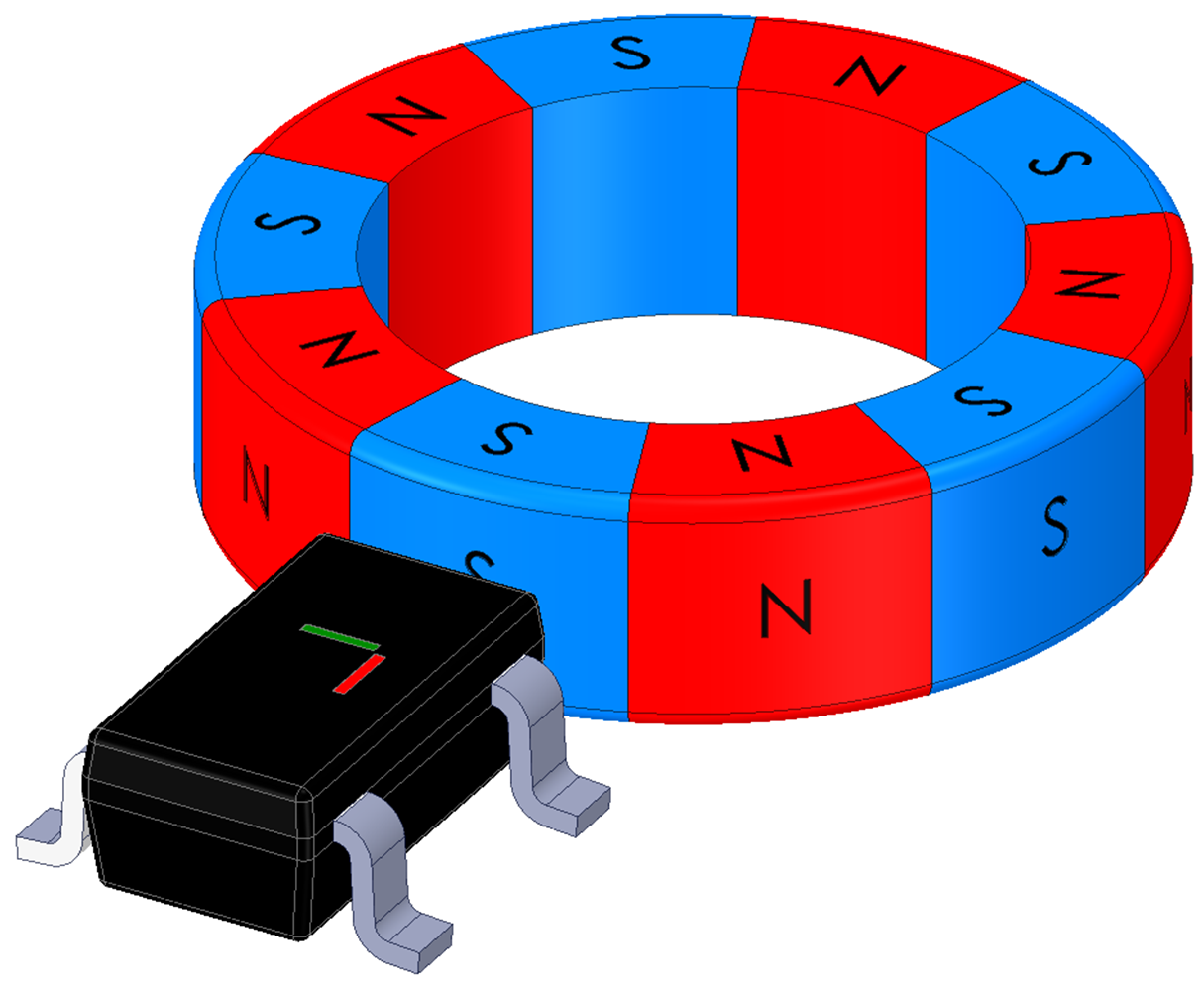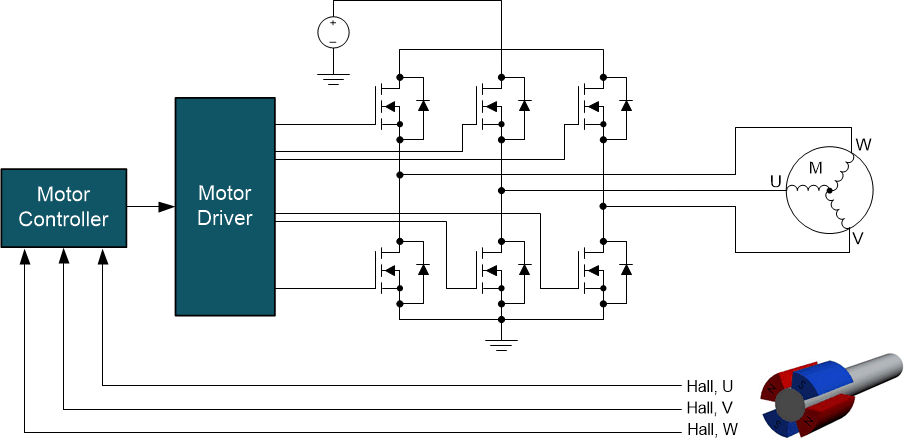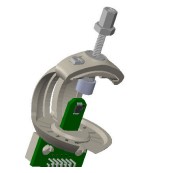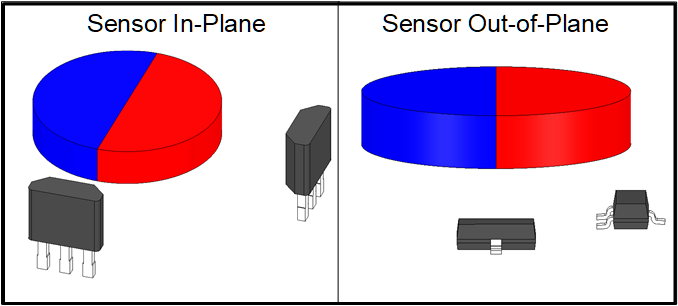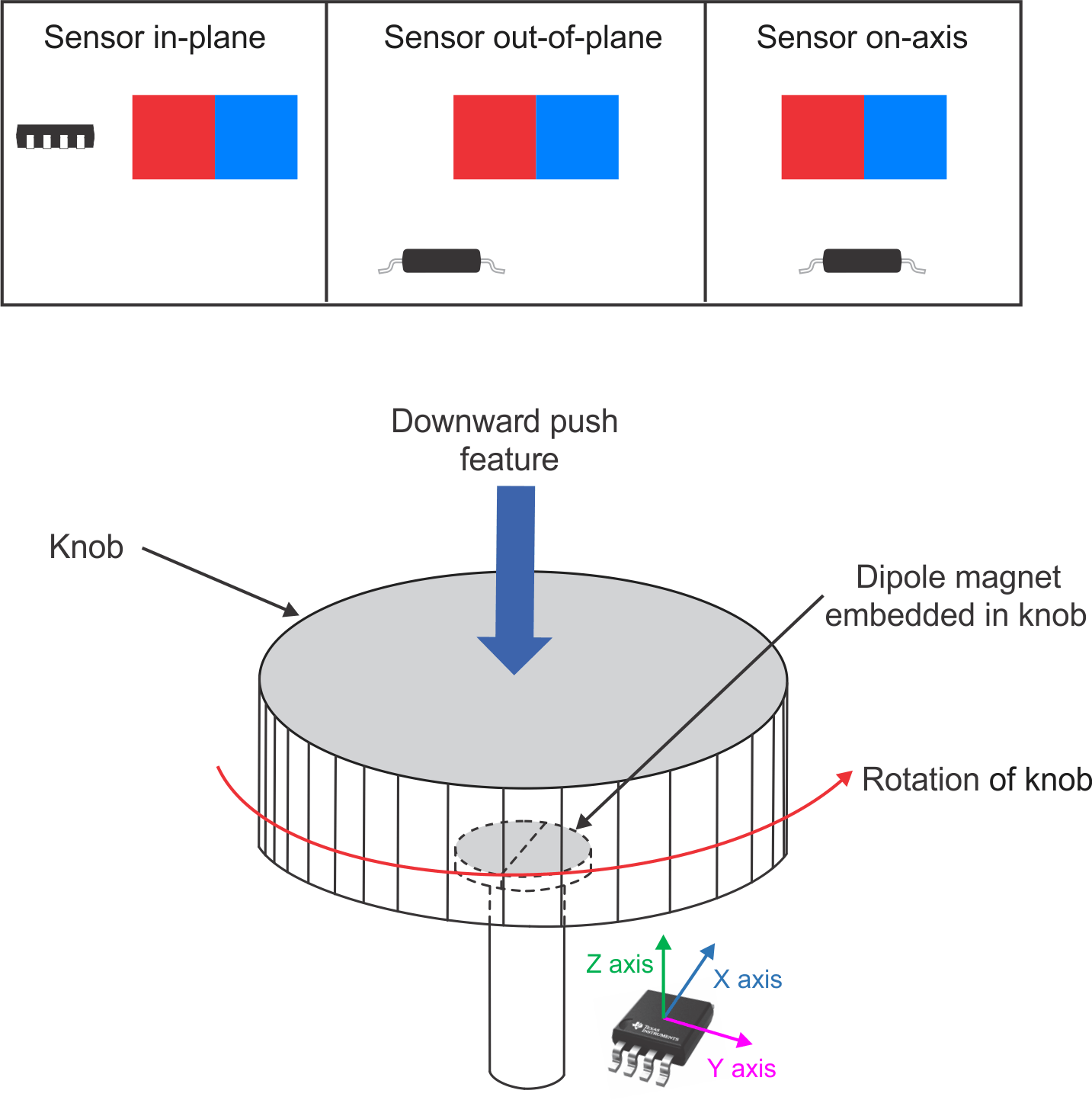SLYT824B March 2022 – April 2024 DRV5011 , DRV5013 , DRV5032 , DRV5053 , DRV5055 , DRV5057 , TMAG5110 , TMAG5110-Q1 , TMAG5111 , TMAG5111-Q1 , TMAG5124 , TMAG5131-Q1 , TMAG5170 , TMAG5170-Q1 , TMAG5170D-Q1 , TMAG5173-Q1 , TMAG5231 , TMAG5273 , TMAG5328
What are Hall-Effect Sensors?
Hall-effect sensors are integrated circuits that transduce magnetic fields to electrical signals with accuracy, consistency, and reliability. Some of the key benefits of using Hall-effect sensors include:
- Precision and accuracy: High-precision latches and switches offer very tight switching thresholds (as small as ±1mT), while some single-axis and 3D linear sensors have accuracy levels as low as 2.6% to provide more headroom for mechanical tolerances.
- High sensitivity: Some Hall-effect sensors have the capability to detect magnetic fields as small as 2mT allowing for the use of small magnets or low-cost magnets that do not produce large magnetic fields.
- High bandwidth: Hall-effect sensors are typically designed to meet low-power, low sampling requirements or high-bandwidth fast-changing magnetic field requirements of an application.
- Wide voltage range: Hall-effect sensors can provide wide voltage ranges, sometimes from 1.65V to 5.5V, allowing for low-power applications. Additionally, for automotive applications that can require a high voltage range, we offer products that are as high as 38V.
System Benefits
Hall-effect sensors offer real system-level benefits allowing for use in a wide variety of end products ranging from battery-powered portable electronics to high-precision factory automation systems. Some of the system benefits include:
- Real-time system monitoring and control
- Magnet field strength to position conversion
- Low-cost position switch
- High-speed rotary encoding
- Flexible mechanical placement
Three Common Hall-Effect Types
| Linear Position | Switch | Latch |
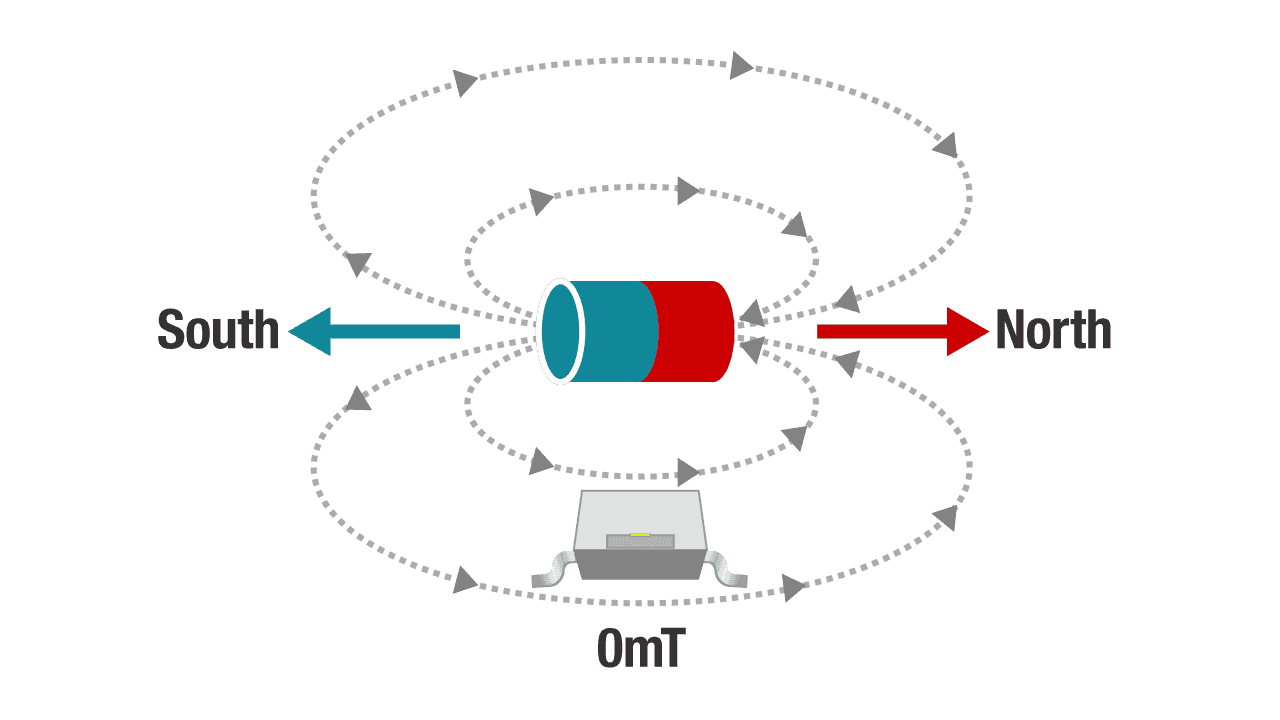 | 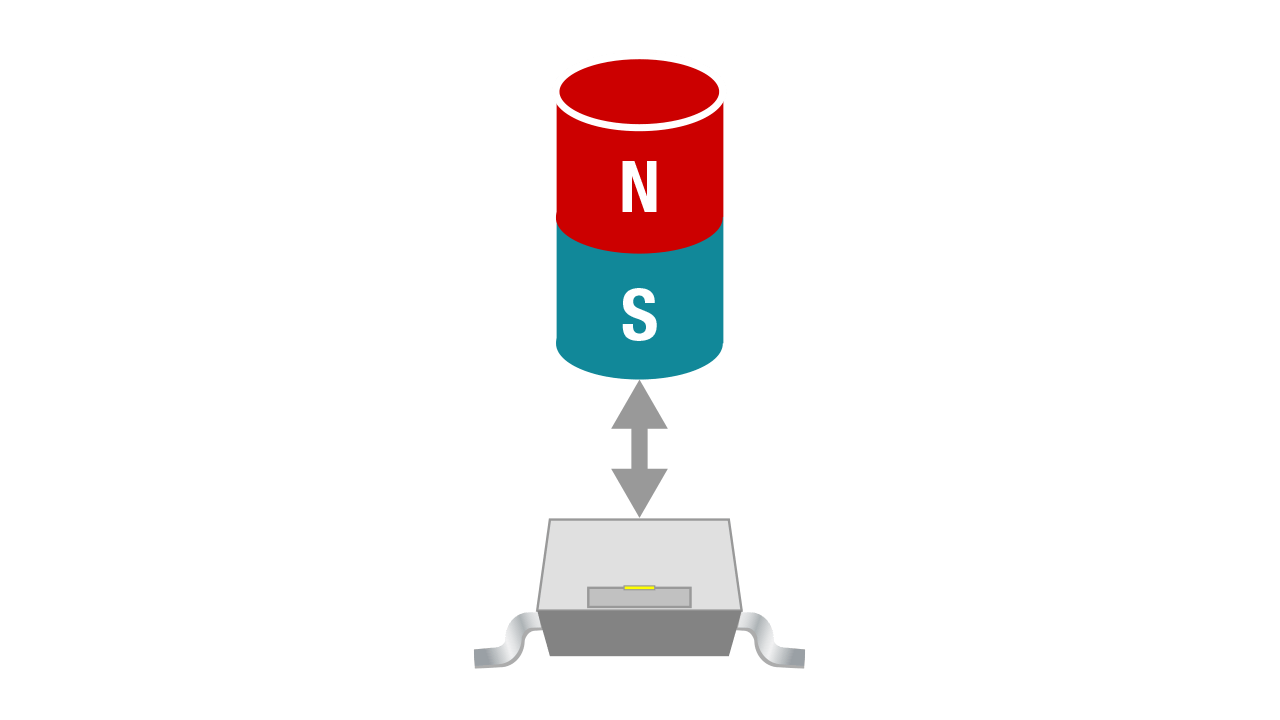 | 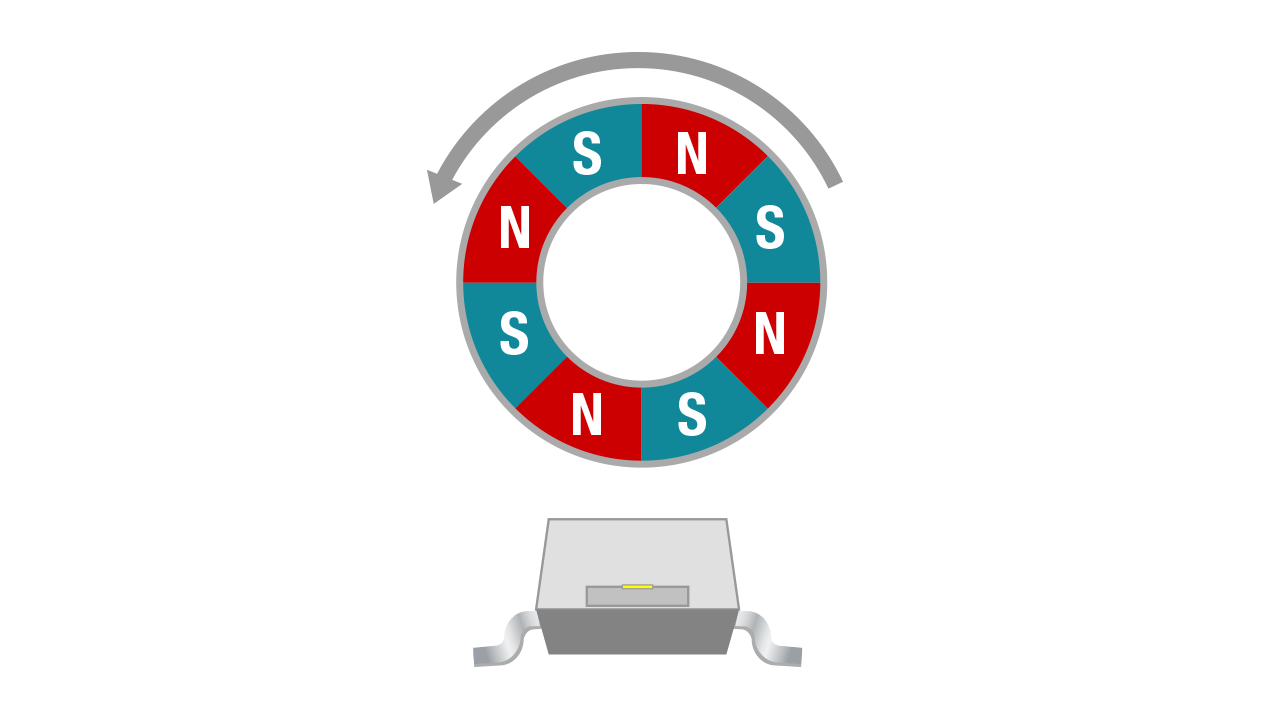 |
| Output signal, either analog or digital, proportional to the magnetic flux density to detect absolute position or angular movements. | Indicates the presence or absence of a magnetic flux density that exceeds a defined threshold for simple on and off or open and close applications. | Determines the speed and direction for rotary encoding and position for motor commutation. |
Common Applications and Use Cases
This section describes common applications for Hall-effect sensors. Each use case details the type of sensor being used, how the sensor is implemented, device recommendations, and application-based documents to consider.
Proximity detection A switch decodes which of two fixed mechanical positions the system is in. The following images show three common methods and their associated magnetic movements relative to the sensor: Head-on, overhead slide-by, and horizontal in-plane. Linear sensors are also used and can provide data not only if an object is in close proximity but also the degree of closeness.
Use cases: Push buttons, slide switches, closed or open lid detection, triggers Recommended devices:TMAG5231, DRV5032, TMAG5328 Additional resources:Designing Single and Multiple Position Switches Using TI Hall Effect Sensors application note, Two-State Selector Using Hall-Effect Sensors application brief, and TI Precision Labs video – Introduction to head-on applications. | Slide-by displacement A linear device determines absolute travel across a defined path (line, arc, and so forth) with an inherent zero-field point and a range of linear field response relative to travel. The travel range can be increased by evenly spacing multiple sensors without overlapping their linear regions.
Use cases: Image stabilization, plunger position control, high-resolution dial selector Recommended devices:DRV5055, DRV5057, TMAG5170, TMAG5170D,TMAG5273, TMAG5173-Q1 Additional resources:Tracking Slide-By Displacement with Linear Hall-Effect Sensors application brief and Linear Hall Effect Sensor Array Design application note. | ||||||||||
Incremental rotary encoding Speed and direction of angular or linear travel can be easily achieved with two latches (small outline no-lead (X2SON) package shown on the left in the following images). Multi-pole magnetics also define the resolution of the steps. With constant speed, the magnetic signals are inherently sinusoidal and magnetically out of phase. Quadrature encoding is easily achieved with dual-latch devices due to their flexible placement relative to the magnet.
Use cases: Knobs, thermostats, home appliance dials, washing machine drums Recommended devices:DRV5013, TMAG5110, TMAG5111 Additional resources:Incremental Rotary Encoders application brief | BLDC motor commutation Three latches are used to detect the speed, direction, and position in this application. By precisely synchronizing the current through the coils on the stator, the permanent magnets on the rotor are attracted to or repelled by these constantly-changing poles, eventually producing torque to spin the motor.
Use cases: BLDC motors Recommended devices:DRV5013, DRV5011 Additional resources:Brushless DC Motor Commutation Using Hall-Effect Sensors application brief. |
3D absolute position Position and movement detection of an arbitrary path of travel can be achieved with a 3D linear sensor due to the capability to measure multiple axes to effectively calculate absolute position.
Orbital Module Attachment for 3D Linear Sensors Use cases: Joysticks, linear motor position Recommended devices:TMAG5170, TMAG5170D, TMAG5273, TMAG5173-Q1 Additional resources:Measuring 3D Motion With Absolute Position Sensors application brief | Angle measurement (single-axis) Determining the rotational absolute position is done by measuring two magnetic field components that are 90° out of phase from each other and using this information in the arctangent function – atan(B1/B2) – to calculate the angle. Two linear sensors are required for the task as shown in the following images in two different package types.
Use cases: Gimbals used in drones and handheld personal electronics Recommended devices:DRV5053, DRV5055 Additional resources:Absolute Angle Measurements for Rotational Motion Using Hall-Effect Sensors application briefs | ||
Angle measurement (3D) A single 3D linear sensor can monitor two magnetic fields simultaneously but has improved flexibility in mechanical placement in relation to the magnet (shown in the following images).
Use cases: High-resolution knobs and dials, robotic systems wheels Recommended devices:TMAG5170, TMAG5170D, TMAG5273, TMAG5173-Q1 Additional resources:Angle Measurement With Multi-Axis Linear Hall-Effect Sensors application report | Sensor modules Modules are available in many form factors to measure end-of-line travel (with a switch), rotary encoding (with a latch), linear displacement (with a single-axis linear), angle measurement (with a 3D linear) and many other functions. Our Hall-effect sensors portfolio offers a wide range of products to meet the needs of many sensor modules.
Use cases: Remote sensing modules, limit switches, linear displacement sensors, rotary encoders, angle sensors Recommended devices:TMAG5170, TMAG5170D, TMAG5273, TMAG5173-Q1, TMAG5124, TMAG5231, TMAG5111 Additional resources: Investigate TI's full line up of Hall-effect position sensors: Magnetic sensors. |
Additional Resources
- Read the Understanding and Applying Hall-Effect Sensor Data Sheets application note, to learn more about how to make better use of the data in a Hall-effect sensor data sheet.
- See the Linear Hall-Effect Sensor Angle Measurement Theory, Implementation, and Calibration application note for foundational linear sensor information.
- Investigate the comprehensive TI Precision Labs curriculum for magnetic sensors.
